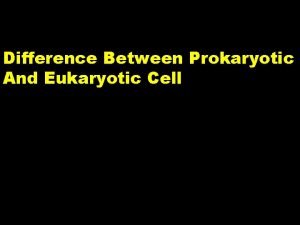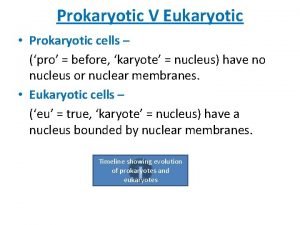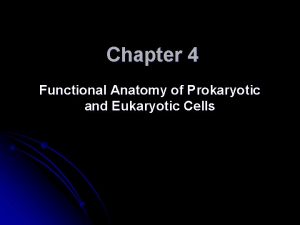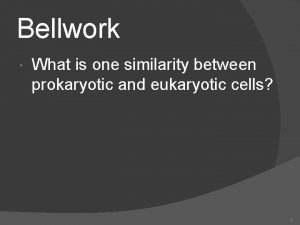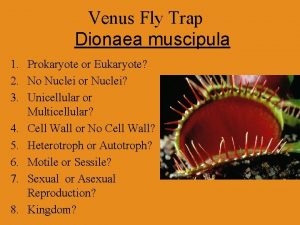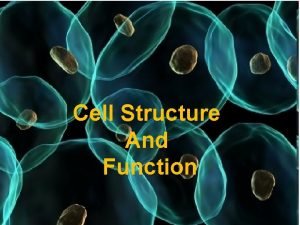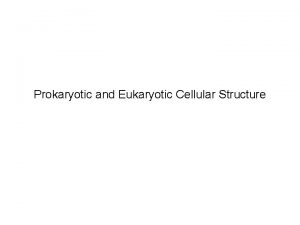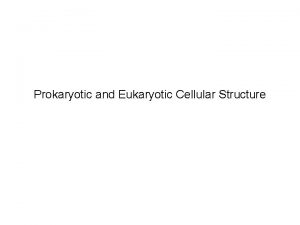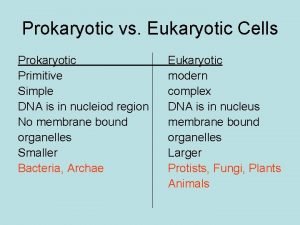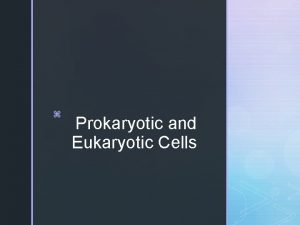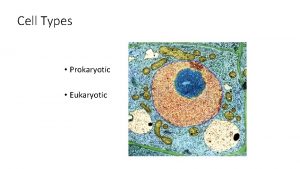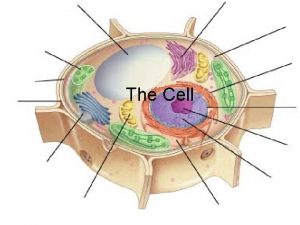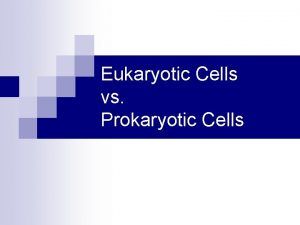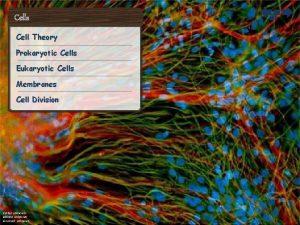Explain how eukaryotic cells evolved from prokaryotic cells

















- Slides: 17

Explain how eukaryotic cells evolved from prokaryotic cells

Endosymbiotic Theory How did eukaryotic cells evolve from unicellular organisms?

Universal Tree of Life

Endosymbiotic Theory • Explains the evolution of eukaryotic cells from simple prokaryotic organisms. • Focuses mainly on the origins of chloroplasts and mitochondria

The timeline of life on Earth: • First organisms to inhabit Earth was Anaerobic (Don’t need Oxygen) bacteria: Ø Scientists have fossil evidence of bacterial life on Earth ~3. 8 billion years ago. Ø At this time, the atmosphere of the Earth did not contain oxygen, and all life (bacterial cells) was anaerobic.

Anaerobic Prokaryotes Thrived

Rise of the photosynthetic bacteria Ø About ~3. 2 billion years ago, fossil evidence of photosynthetic bacteria, called cyanobacteria, appeared Ø These bacteria use the sun's energy to make sugar. Ø Oxygen, released as a byproduct, began to accumulate in the atmosphere

Oxygen is poisonous to anaerobic prokaryotes Ø As a result, anaerobic cells were now a disadvantage in an oxygen-containing atmosphere, and started to die out as oxygen levels increased. Ø Aerobic cells appear in the fossil record shortly after that (~2. 5 Billion years ago). Their cells were able to use that 'toxic' oxygen and convert it into energy (ATP) and water. Organisms that could thrive in an oxygen-containing atmosphere were now 'best suited to the environment'.

Endosymbiotic Theory • First proposed by former Boston University Biologist Lynn Margulis in the 1960's Ø Proposed that aerobic bacteria were preyed upon and ingested by anaerobic bacteria Ø Each had a survival advantage as long as they continued their partnership.

Symbiosis ~ “living together, mutually beneficial” Ø The aerobic bacteria would have handled the toxic oxygen for the anaerobic bacteria Ø The anaerobic bacteria would provide food and protection the aerobic bacteria

Over time, the aerobic bacteria lost the ability to live on its own

Which organelle do you think the ingested aerobic bacteria would eventually evolve into?

How does the endosymbiotic theory explain photosynthetic eukaryotic cells?

Evidence to Support Endosymbiosis Theory • Organelles similar size of smaller bacterial cells • Organelles are separated from the cytoplasm by membranes similar to cell membrane of bacterial cells. • Organelles reproduce by simple fission like bacterial cells • Some organelles have simple (often circular) DNA • DNA of the organelles are more closely related to particular types of bacteria than they are to the nucleus of the cell in which they reside.

Endosymbiosis means… • • A. Living together B. Living Inside C. Entering Together D. Joining Together

The theory of endosymbiosis explains… • • A. The origin of Eukaryotes B. How species Develop C. How bacteria live D. Why cells rely on one another

Which 2 organelles arose from endosymbiosis? • • • Rough ER Smooth ER Mitochondria Flagellum Chloroplast Golgi Apparatus
 Prokaryote vs eukaryote worksheet
Prokaryote vs eukaryote worksheet Prokaryotes vs eukaryotes venn diagram
Prokaryotes vs eukaryotes venn diagram 4 types of eukaryotic cells
4 types of eukaryotic cells Prokaryotic cells vs eukaryotic cells
Prokaryotic cells vs eukaryotic cells Definetion of cell
Definetion of cell Difference between prokaryotic and eukaryotic cells
Difference between prokaryotic and eukaryotic cells Similarities between prokaryotic and eukaryotic cells
Similarities between prokaryotic and eukaryotic cells Prokaryotic and eukaryotic cells chart
Prokaryotic and eukaryotic cells chart Prokaryotic and eukaryotic cells
Prokaryotic and eukaryotic cells Is protist a prokaryote or eukaryote
Is protist a prokaryote or eukaryote Prokaryotic and eukaryotic difference
Prokaryotic and eukaryotic difference Anatomy of prokaryotes and eukaryotes
Anatomy of prokaryotes and eukaryotes Similarity between prokaryotic and eukaryotic cells
Similarity between prokaryotic and eukaryotic cells Similarities between prokaryotic and eukaryotic cells
Similarities between prokaryotic and eukaryotic cells Is a venus fly trap prokaryotic or eukaryotic
Is a venus fly trap prokaryotic or eukaryotic Staphylococcus prokaryotic or eukaryotic
Staphylococcus prokaryotic or eukaryotic Manitole
Manitole Prokaryotic and eukaryotic venn diagram
Prokaryotic and eukaryotic venn diagram





